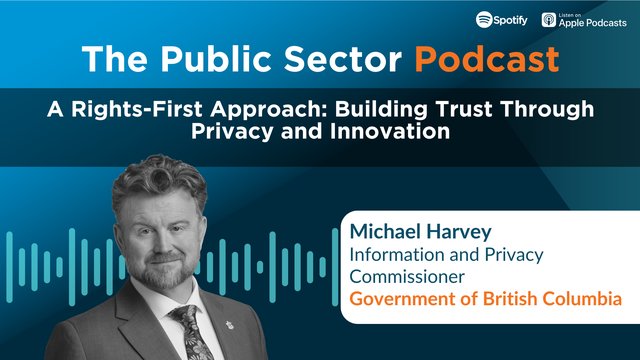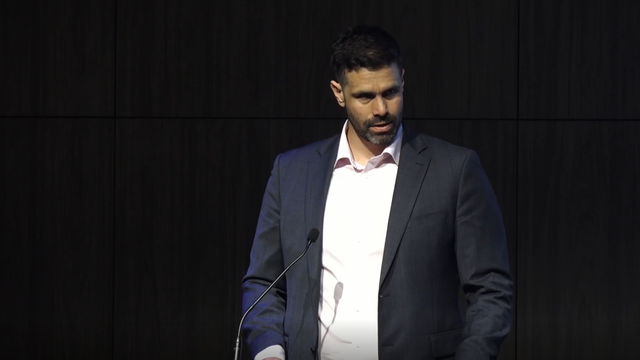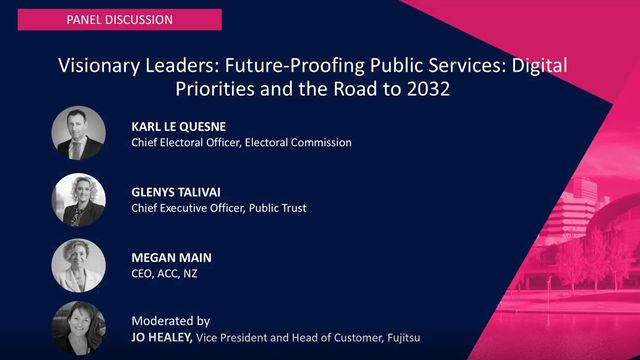Highlights from the Melbourne In-Person Event, 6 April 2022
As the closest tier of government to citizens, councils across the globe are facing a period of significant disruption. Population growth and change, budget constraints, economic recovery and the rising demands on services are all pressing issues. Whole-of-council transformation is crucial to tackle these issues and become future ready.
Local governments need to be agile, innovative and efficient — driving both policy and implementation through coherent and collaborative approaches. Embracing new technologies and streamlining processes will enable councils to better meet core responsibilities and deliver functions, while upskilling employees and increasing operational efficiency will help set them up as an employer of choice and become an example of innovation and adaptability.
Some Positives from the Pandemic
For many organisations, be they small or large businesses or government institutions, the pandemic that we are still emerging from, has been a tumultuous experience. In many ways, there have probably been more changes in the last two years – many of them forced – than in any similar period in previous living memory. This is was a particularly confronting period for local government. Across the country, people heavily rely on their municipal organisations for household services like childcare, rubbish collection, pet registration and many other innumerable amenities. Thus when changes were forced upon the councils and the services they were able to provide, it was a greatly challenging period. But it was also one that forced councils to change some of their approaches.
Jenny Dahlstrom , the Manager of Transformation and Change at Knox City Council in Melbourne’s east, says that that pandemic “provided clarity and a common purpose.” From an employee perspective, initially when COVID-19 first struck, there was a scramble to set everyone up “to work from home.” Great changes happened in that initial period at rapid pace. At the same time, Rachel Olivier , the General Manager of City Sustainability & Strategy at the City of Darebin in Melbourne’s northern suburbs, says that the “gift” of the pandemic was the “agility at which workforces had to change.” Though working for and on behalf of the community should always be at the forefront of all council work, during the height of the pandemic “we really had to put ourselves in the shoes of our community. That meant helping them at a time of real need.” For a council like Darebin, that meant doing anything that was required in the most effective and efficient ways for the community, even if it wasn’t necessarily the most efficient way for the council at the time. Now though, two years later, whilst “some practices will never go back,” for many others it is about “creating hybrid or other environments” that make sense to both the employees and the customers. As is always the case, “the community has to take the lead, and the methodologies or the ‘how’ will have to come second.” That ‘how’ could be about technology, or it could be about transitions in other ways.
The Need for Local Government Transformation
One of the buzz words in local government for a long time has been ‘transformation’. Many councils feel that if they are not in a constant state of transforming and upgrading their services then they are being stagnant. In modern times, transformation usually refers to technology, but it doesn’t have to. Jennifer Bednar , the Director of Customer and Business Transformation at the City of Casey in Melbourne’s south east, says that “transformation means different things to different organisations, and a digital transformation is only piece of the puzzle.” So much so that even a transformation focussed on technology “is rarely just digital. Is should be holistic across the whole system.” In a lot of ways, each different department within a council is like “a little business, but it is only together when they form an actual organisation.” As such, any “transformation journey should be integrated rather than be a series of little transformation journeys.” And in fact, to be truly successful, all transformation journeys need to “address the weakest link.”
Talitha Donovan , the Manager of Organisation Design at the City of Greater Geelong , about an hour outside of Melbourne, says that as much as councils are designed to serve the community, often their services don’t actually reflect that. “More often than not, councils embark on drastic, far-reaching change programs that don’t seem to take into account all the necessary dimensions of their people, processes or systems.” That partly explains why many councils are constantly in a state of flux. “But what if our organisations were actually designed to achieve their visions?” For both the City of Greater Geelong and the City of Casey, their recent transformation journeys were about better aligning themselves with their visions.
Prioritisation and Consolidation
Almost all councils are guilty of trying to do too much. This is not necessarily a criticism since local government is the closest tier of public service to the people, and there is a greater expectation for services. But Jenny Dahlstrom says that in the process of trying to “do it all,” councils sometimes need to take a step back “to prioritise their goals and make sure they are always related to customer goals.”
At the City of Casey, Jennifer Bednar says that as part of their latest transformation journey, this meant that “we decided our goals were too ambitious so we began to focus and sharpen our vision.” They know that they are a growing council with “around 370,000 residents now, and an expectation of over 550,000 in 2040, which is more people than in all of Tasmania!” To serve them, there are over 1,800 employees and a turnover of about $540 million annually. “We also offer 66 primary services,” and about a dozen ancillary ones. But the latest review suggested that there was a “misaligned service mix, meaning that our service mix has not evolved over time and doesn’t clearly align with our contemporary value proposition, or make the most of innovation and partnerships.” This, amongst a number of other things, was therefore something that needed to be addressed.
The City of Greater Geelong is also growing quickly, excepted to go from a little over 250,000 residents now, to over 390,000 by 2041. As such, within 25 years, Talitha Donovan says they want their city to be “recognised as a clever and creative city-region that is forward looking, enterprising and adaptive, and cares for its people and environment.” To get there, they decided it was time for an “evidence-based re-design” of their operations, using a “targeted operating model.” All the parts of the model need to “correlate with each other,” and the whole thing needs to “work holistically” without any superfluous parts.
Getting to the nub of the transformation
Jennifer Bednar says that to really ensure that their transformation was going to be a success, they created transformation mission statement, which says that it is their goal is “to make Casey an adaptable, future-ready council, where innovative people and partnerships thrive to deliver maximum community benefit.”
As part of this, they also created seven inter-related goals:
-
A people-focussed organisation – “To have a diverse workforce that works together as one team with our people proud to work at Casey.” They also need to “have the right capabilities and mind-set.”
-
Strategy and adaptability – “To use an evidence-based approach, with a strategic focus, to ensure our organisation is ethically governed, responsive and adaptable.”
-
A contemporary business model – “To have a lean, innovative and sustainable operating model, which enables our people to focus on meaningful work.”
-
Customers and community – “To have a deep connection with the community and deliver increased impact and outcomes. To have a single view of our customers, making us easy to do business with.”
-
Service excellence – “To have a deliberate and scalable mix of services that are co-designed, appreciative of lifecycle trends and are constantly adaptable to conditions and emerging needs.”
-
Shared leadership – “To ensure leaders coach, empower and demonstrate brave thought leadership in how we operate and deliver services. “
- Strong partnerships – “To ensure our community, commercial and strategic partnerships are maximised, productive and purposeful, and that we deliver shared benefit.”
However, coming back to the earlier point around consolidation, after these seven goals were released across the council, it became evident that achieving all this with limited resources would be nigh on impossible, so three of the goals were selected as being realistically achievable in the short-term. These were goals 3, 4 and 5, though goal 3 was updated from contemporary to ‘a sustainable business model’, to ensure the “continued sustainability of our model and our people.”
With these updated three goals selected for “immediate focus,” five key focus areas were also developed which were designed to underpin each of the goals: Customer, to create “an integrated and standardised approach based on data”; Services, “to further enhance the quality of service delivery”; Organisation, to “standardise our project delivery and to improve our ability to design and develop our services”; People, “to improve employees’ experience of working at Casey”; and Technology Essentials, “to ensure our technology capability, processes and resources across the organisation are optimised, integrated, safe and compliant.”
Talitha Donovan says that their new model “includes things like strategy, vision, outcomes and capabilities,” as well as an organisational structure, but the structure alone “doesn’t actually tell you anything about how an organisation functions.” So rather than trying to re-create or update their structural model, their new operating model is about “showing us how our organisation will operate in 2024, and then another one for 2028, and so on, as we evolve and our community changes.” The model is essentially about community enablement, municipal planning, service delivery and community & customer service, all underpinned by continuous improvement and employee enablement, leading to a better customer experience. “We are starting to think about how we work together to deliver outcomes for the community, rather than focussing on deliverables in our own patches. And in our planning, we’re moving from siloed planning that isn’t strategically driven, to integrated planning that directly aligns with our strategic priorities.” The point of all of this is to “ensure that the change we deliver is holistic, and covers people, processes and systems.” It takes longer to implement and the changes might not be immediate (which is why the plan is to 2024 and beyond), but they should ultimately be sustainable in the long-term. The changes so far have included “a new organisation strategy, new organisation-wide KPIs to measure our success, and a new planning cycle. We’ve also created an accountability framework, and we’ve started doing an annual strategy week.” All of these are running simultaneously, but there is still more to do. “We are designing an Enterprise Program Management Office, we are delivering an Integrated Municipal Planning Framework, we’re redesigning how we connect with our customers and community, and we’ll soon be exploring how we deliver services, to ensure our services are efficient and focussed on future needs.”
Ensuring the Sustainability of the Transformation
Ensuring the long-term sustainability of any transformation is a challenge. Rachel Oliver says that sometimes the best thing to do is to focus on the things that are controllable and let other things fall into place on their own. “Currently, especially post-pandemic, we are focussing on the vulnerable in our community, and also looking at data to see how it can best support our efforts going forward.” But like all things, for any change to truly be successful, “it needs to have some ownership.” Jenny Dahlstrom says that whether it is an organisation-wide transformation or simply a small departmental change, the most important thing is to have “good leadership.” For instance, many employees have now set up their lives to work from home. In some departments, this may be acceptable for the foreseeable future, but in other areas, employees need to be in the office for better collaboration and customer relations. As such, “the leaders need to show their staff that it has to be about what’s best for the organisation as a whole rather than just for the individual workers.”
Jennifer Bednar says that for changes to be implemented and accepted in the long-term, “innovation initiatives and a sustainable approach” had to be enabled. Essentially this is really about “listening to the people through feedback mechanisms and pivoting as required.” At the same time, though transformation is “ultimately about long-term goals, sometimes you have to stop and ask what can we change or do today.” That comes from “good leadership, role modelling and training.”
Talitha Donovan says that through their organisational design, they are “not only able to design our organisation to achieve our goals, but re-imagine our role in the community, aligned to our vision. Fundamentally, this is about giving us the opportunity to change the way we imagine our organisation.” And ultimately, “we are not even about service delivery. Rather, we are about being the custodian of municipal planning and customer services.” This means that “all of us should always focus on the most important things, which is the places and the people we serve.”
Talitha Donovan says that through their organisational design, they are “not only able to design our organisation to achieve our goals, but re-imagine our role in the community, aligned to our vision. Fundamentally, this is about giving us the opportunity to change the way we imagine our organisation.” And ultimately, “we are not even about service delivery. Rather, we are about being the custodian of municipal planning and customer services.” This means that “all of us should always focus on the most important things, which is the places and the people we serve.”
Featured Speakers:
- Jennifer Bednar , Director, Customer and Business Transformation, City of Casey
- Talitha Donovan , Manager, Organisation Design, City of Greator Geelong
- Jenny Dahlstrom , Manager, Transformation and Change, Knox City Council
- Rachel Olivier , General Manager, City Sustainability & Strategy, City of Darebin


































